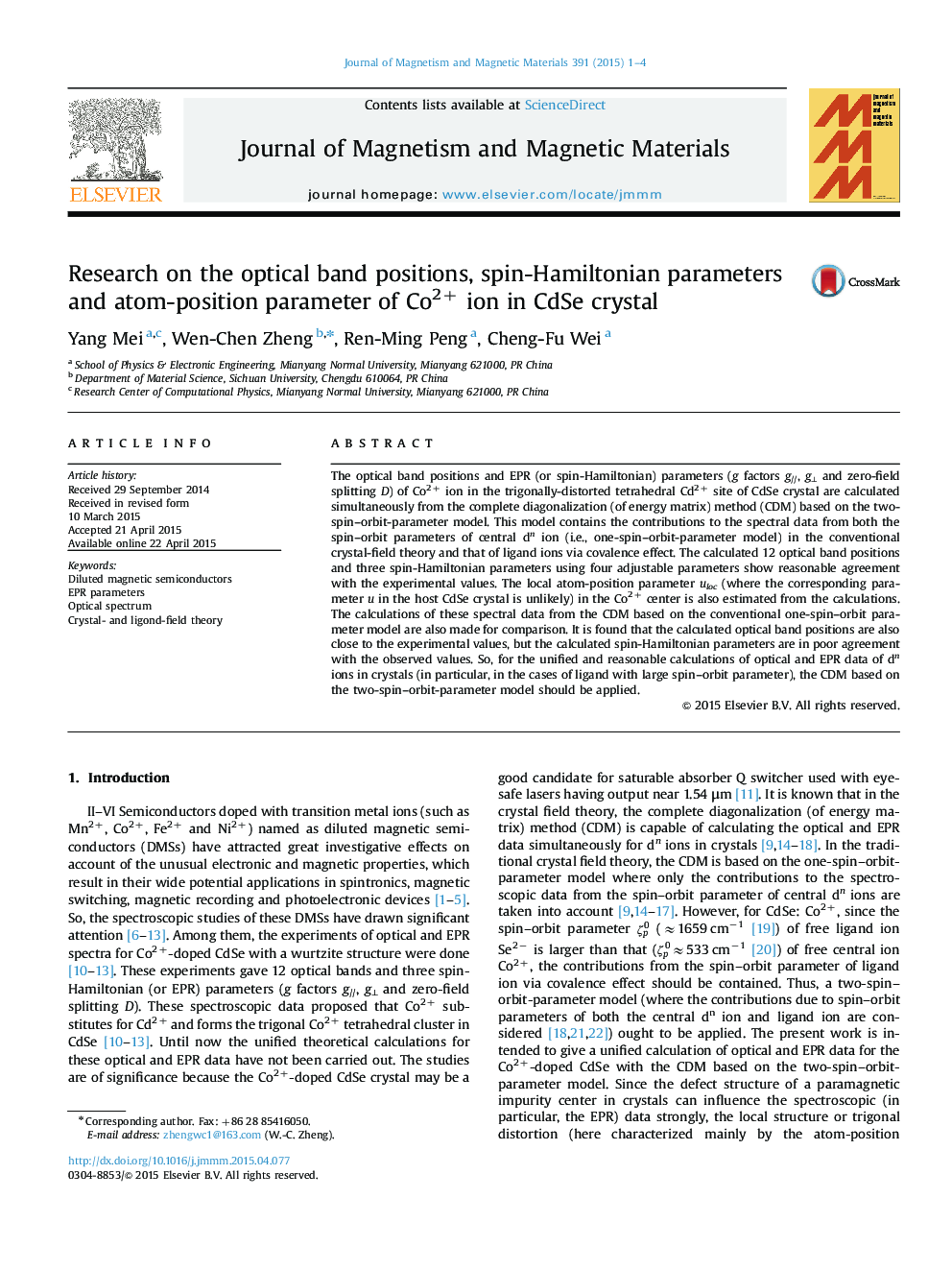| Article ID | Journal | Published Year | Pages | File Type |
|---|---|---|---|---|
| 1798701 | Journal of Magnetism and Magnetic Materials | 2015 | 4 Pages |
•Fifteen optical and EPR data of Co2+ center in CdSe are calculated together.•Calculation is using the complete diagonalization (of energy matrix) method (CDM).•The CDM based on the two-spin–orbit-parameter model is more reasonable.•Local atom-position parameter in Co2+ center in CdSe is obtained from calculation.
The optical band positions and EPR (or spin-Hamiltonian) parameters (g factors g//, g⊥ and zero-field splitting D) of Co2+ ion in the trigonally-distorted tetrahedral Cd2+ site of CdSe crystal are calculated simultaneously from the complete diagonalization (of energy matrix) method (CDM) based on the two-spin–orbit-parameter model. This model contains the contributions to the spectral data from both the spin–orbit parameters of central dn ion (i.e., one-spin–orbit-parameter model) in the conventional crystal-field theory and that of ligand ions via covalence effect. The calculated 12 optical band positions and three spin-Hamiltonian parameters using four adjustable parameters show reasonable agreement with the experimental values. The local atom-position parameter uloc (where the corresponding parameter u in the host CdSe crystal is unlikely) in the Co2+ center is also estimated from the calculations. The calculations of these spectral data from the CDM based on the conventional one-spin–orbit parameter model are also made for comparison. It is found that the calculated optical band positions are also close to the experimental values, but the calculated spin-Hamiltonian parameters are in poor agreement with the observed values. So, for the unified and reasonable calculations of optical and EPR data of dn ions in crystals (in particular, in the cases of ligand with large spin–orbit parameter), the CDM based on the two-spin–orbit-parameter model should be applied.
